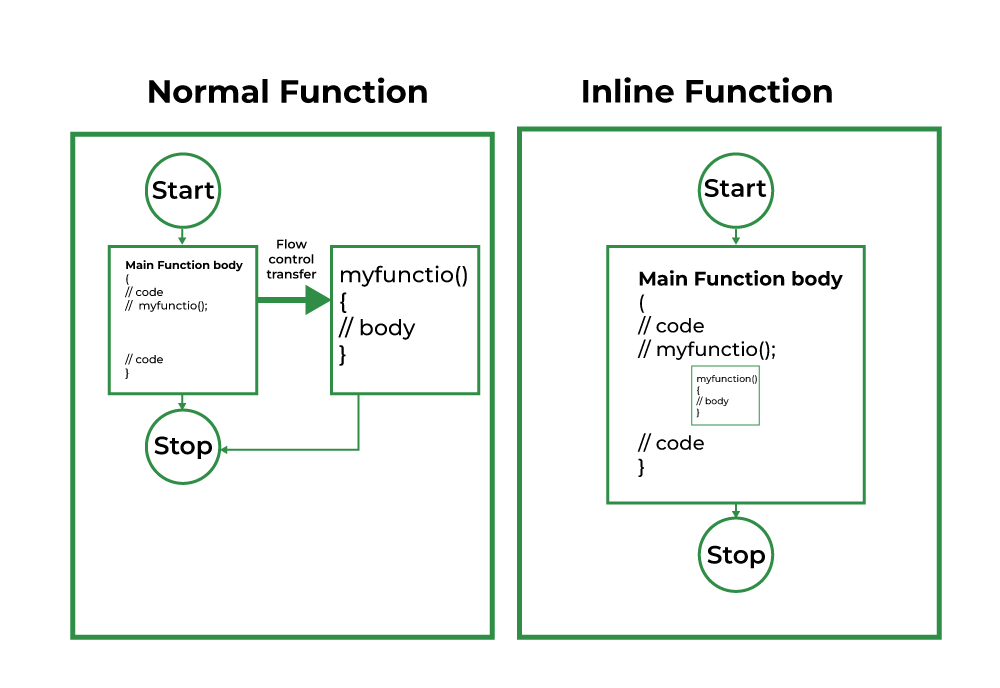
What are inline functions? Why are they used? What are the situations in which a function cannot work like an inline function? Explain with the help of examples.
Introduction To Inline Functions
In C++, inline functions are a powerful optimization technique that can significantly enhance the performance of your code. These functions are used to reduce the overhead of function calls and improve execution speed by directly inserting their code at the calling site. In this article, we will delve into the concept of inline functions, their benefits, and explore situations where a function cannot work as an inline function, supported by relevant examples.
Understanding Inline Functions:
An inline function is a special type of function that is defined with the inline keyword. When a function is declared as inline, the compiler attempts to replace the function call with the actual function code at the calling site during the compilation process. This eliminates the need for the typical function call overhead, such as parameter passing and stack frame setup.
Advantages of Using Inline Functions:
- Improved Performance: Inline functions can lead to improved performance, especially in situations where small, frequently called functions are involved. By avoiding the function call overhead, the program execution becomes faster and more efficient.
- Code Size Reduction: By inserting the function code directly at the calling site, the overall size of the executable can be reduced. This is because there is no need to create a separate function call and return instructions for inline functions.
Situations for Inline Function Use:
- Small Functions: Inline functions are most effective for small functions with minimal code, such as getter and setter methods, mathematical operations, and utility functions.
- Frequently Used Functions: Functions that are called frequently throughout the program benefit the most from being declared as inline. Examples include basic arithmetic operations, comparison functions, and accessors for data members.
- Header-Only Libraries: Header-only libraries are common in C++, and inline functions are a natural fit for such libraries. When all the code is in the header file, inline functions ensure efficient usage and easier integration into projects.
Situations where a Function Cannot be Inline:
- Large Functions: Functions with a significant amount of code are not suitable for inlining. The inline expansion would lead to code bloat and potentially degrade performance.
- Functions with Loops or Recursion: Functions containing loops or recursive calls are generally not ideal candidates for inline expansion. This is because the inline expansion could lead to increased code size and hinder execution speed.
- Virtual Functions: Virtual functions, which are a part of polymorphism and runtime polymorphic behavior, cannot be inline. The decision to use a virtual function or an inline function depends on the specific requirements of the code.
Examples:
Example 1: Inline Function
#include <iostream>
// Inline function to calculate the square of a number
inline int square(int num) {
return num * num;
}
int main() {
int number = 5;
int result = square(number); // Directly expands to "int result = number * number;"
std::cout << "Square of " << number << " is: " << result << std::endl;
return 0;
}Example 2: Function Not Suitable for Inline
#include <iostream>
// Function that computes the factorial of a number
int factorial(int num) {
if (num <= 1)
return 1;
else
return num * factorial(num - 1);
}
int main() {
int number = 5;
int result = factorial(number); // Recursive call
std::cout << "Factorial of " << number << " is: " << result << std::endl;
return 0;
}Conclusion
Inline functions in C++ are a valuable optimization tool that can significantly improve code performance and reduce function call overhead. When used correctly, inline functions can lead to more efficient execution and smaller executable sizes. However, it is crucial to carefully choose the functions that are declared as inline, ensuring they are small and frequently used.